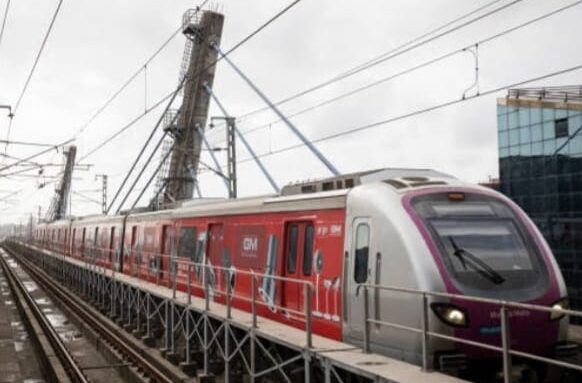BB Desk
With Phase 1 of Metro Line 2B moving closer to commercial operations, Mumbai’s eastern suburbs are poised for a major real estate boost. The Mumbai Metropolitan Region Development Authority (MMRDA) has confirmed that all mandatory rectifications have been completed, and the Commissioner of Metro Railway Safety (CMRS) has also stated the necessary critical inspections have been carried out.

Phase 1 of Line 2B comprises five stations and covers a 5.39-km stretch between Mandale and Diamond Garden. The segment is part of the larger DN Nagar–Mandale Metro corridor, a crucial east-west link designed to decongest Mumbai’s roads and improve suburban connectivity. Once CMRS certification is received, passenger operations will most likely start by December 2025, with the full corridor slated for completion in 2027.
Industry experts believe the new metro line will act as a catalyst for real estate growth across Chembur, Mankhurd, Wadala, and other eastern suburb nodes.
“Transit infrastructure is one of the most powerful triggers for real estate appreciation. With Metro Line 2B Phase 1 going live, we foresee increased demand for homes and commercial spaces near stations, better rental yields, and renewed interest from developers for transit-oriented projects,” said a senior industry analyst.
A spokesperson for Chandak Group further added, “Chembur and its surrounding micro-markets continue to witness healthy demand for quality housing. The upcoming operationalization of Metro Line 2B is expected to significantly improve connectivity to key employment hubs, which in turn will enhance buyer sentiment, trigger fresh launches, and support faster inventory absorption across segments. Since the launch of Chandak Highscape City in Chembur (E), we have observed strong traction from both end-users and investors, and anticipate this demand to further strengthen as infrastructure upgrades take shape.”
Properties around the five Phase 1 stations are expected to command higher prices due to enhanced accessibility and reduced commute times. Adjoining localities could see heightened interest as improved connectivity widens the catchment for homebuyers and tenants. Developers are likely to explore mixed-use projects and capitalize on potential Floor Area Ratio (FAR) relaxations near metro corridors. Improved connectivity typically drives rental appreciation, benefitting both investors and end-users. Ancillary upgrades such as feeder bus services, road improvements, and last-mile connectivity solutions are expected to enhance the overall livability of neighborhoods along the line.
While real estate experts anticipate a positive price trajectory, they caution that the full benefits will be realized over the next few years as operations stabilize and supporting infrastructure matures. With the final safety checks completing, Mumbai’s real estate sector is watching closely. As the Mandale-Diamond Garden stretch prepares to open, the city’s housing and commercial markets may be entering a new phase of growth, reshaping the realty map of the eastern suburbs.
